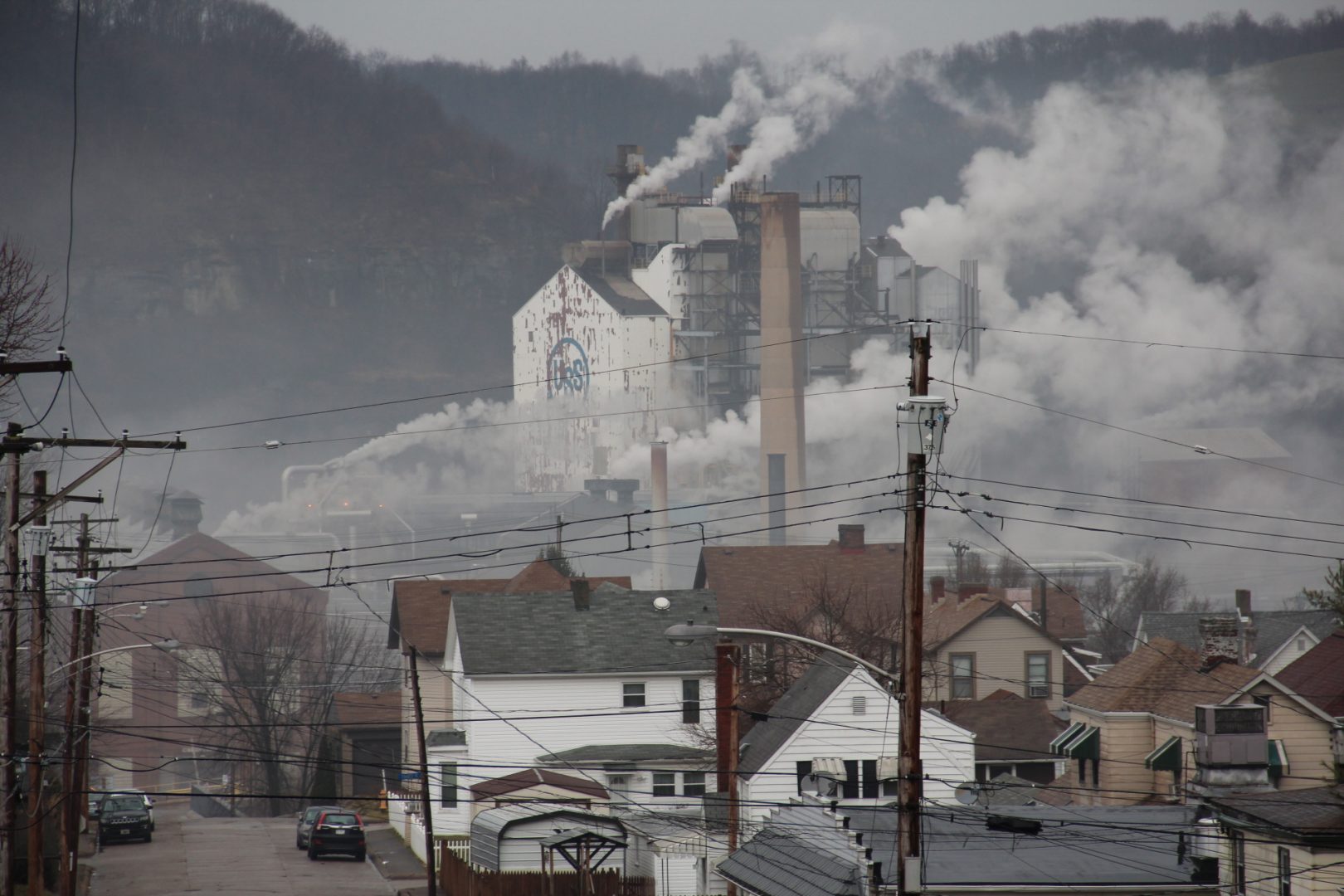
U.S. Steel's Clairton Plant, the largest coke works in North America, in Clairton, Pa.
Reid R. Frazier / StateImpact Pennsylvania


U.S. Steel's Clairton Plant, the largest coke works in North America, in Clairton, Pa.
Reid R. Frazier / StateImpact Pennsylvania

Reid R. Frazier / StateImpact Pennsylvania
U.S. Steel's Clairton Plant, the largest coke works in North America, in Clairton, Pa.
This story is published as part of Covering Climate Now, a global collaboration strengthening coverage of the climate story.
The Department of Environmental Protection is hoping to address environmental justice concerns raised by Pennsylvania’s attempt to join the Regional Greenhouse Gas Initiative (RGGI).
The cap-and-trade program among eleven states aims to reduce emissions from power plants by requiring each plant buy an allowance for each ton of carbon dioxide emitted.
In a recent presentation to the Air Quality Technical Advisory Committee, RGGI project team member Allen Landis said DEP is adding a set of what it calls equity principles to the draft final regulation to join the program. They include collecting public input about decisions, protecting public health and working to distribute environmental and economic benefits of the program.
Some environmental groups are concerned already-disadvantaged communities won’t see equal benefits from RGGI, or won’t be protected from a possible redistribution of pollution under the program.
DEP doesn’t yet have details about how the principles would be enforced.
“I don’t think just intentions listed in a bulleted list are enough,” said Julie Greenberg, who directs the group POWER Interfaith’s work on climate justice and jobs. She said there also needs to be a plan with concrete steps to address issues as they come up.
DEP also says it will assess air quality annually, with an eye toward environmental justice communities. Those are defined as areas with a certain number of minority or low-income residents. DEP policy promises to “meaningfully involve” these communities in decisions that affect their environment, but it lacks teeth. The agency is working to update the policy.
Disproportionate impacts aren’t expected in cap-and-trade programs, said Dallas Burtraw, an economist with Resources for the Future.
“It may be that emissions reductions might not occur evenly, or even most quickly in communities that are historically overburdened,” Burtraw said.
But some studies have found a redistribution of pollution after RGGI kicked in.
“Any cap-and-trade system is going to likely reallocate where pollution is created and where it is abated,” said Nathan Chan, an assistant professor at the University of Massachusetts Amherst who has studied RGGI. “What’s not as obvious is whether this would necessarily cut along environmental justice lines.”
Under RGGI, a power plant could sell their pollution allowances to another plant. Pollution reallocation could happen if some power plants reduce emissions, then sell their extra allowances to plants that emit more.
Chan added it could be difficult to draw a line between RGGI and increased pollution in a certain area as there are many factors at play.
Danae Hernandez Cortes and Kyle Meng, who have co-authored work on the impacts of California’s cap-and-trade program on environmental justice, called the equity principles a good step to make sure disadvantaged communities are heard.
They said to get a full picture of how air quality could change in those communities, regulators will need to look not just at a certain plant’s local emissions, but also atmospheric conditions that could affect how pollution travels.
Other RGGI states haven’t made such principles an explicit part of their rules for participation, but many use program proceeds to help low-income households, for example with electricity bill assistance. Others are pursuing similar measures outside RGGI. Burtraw said environmental justice discussions have been particularly active in Massachusetts, New York, and New Jersey.
Gov. Tom Wolf has said he wants to invest some of the revenue to help impacted communities transition their economies away from a reliance on coal-fired power plants and to support environmental justice areas.
In California, Burtraw said companion legislation to the state’s cap-and-trade program expanded air monitoring networks to identify local pollution hotspots and established a new state-local relationship to create roadmaps for reducing pollution. The state also requires 25% of investments made through the program happen in disadvantaged communities.
StateImpact Pennsylvania is a collaboration among WITF, WHYY, and the Allegheny Front. Reporters Reid Frazier, Rachel McDevitt and Susan Phillips cover the commonwealth’s energy economy. Read their reports on this site, and hear them on public radio stations across Pennsylvania.
(listed by story count)
StateImpact Pennsylvania is a collaboration among WITF, WHYY, and the Allegheny Front. Reporters Reid Frazier, Rachel McDevitt and Susan Phillips cover the commonwealth’s energy economy. Read their reports on this site, and hear them on public radio stations across Pennsylvania.
Climate Solutions, a collaboration of news organizations, educational institutions and a theater company, uses engagement, education and storytelling to help central Pennsylvanians toward climate change literacy, resilience and adaptation. Our work will amplify how people are finding solutions to the challenges presented by a warming world.